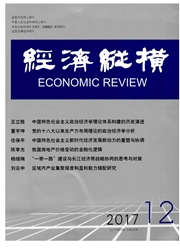

 中文摘要:
中文摘要:
本文构建新凯恩斯DSGE模型,将财政支出细分为政府投资、消费以及转移支付,运用贝叶斯方法估计各类财政支出规则,结合反映中国特征的经济参数深入分析了货币政策外生决定情形下财政变量影响价格的作用机制。研究发现,即使货币政策保持独立,我国财政政策依然可以决定价格,财政政策非李嘉图制度的"债务通胀化"路径存在;政府投资短期最易引致债务和通胀风险,但长期可有效缓解债务压力,且对产出的挤入效应最强;转移支付虽然对产出的挤入效应偏低,但其引致的社会风险和福利损失最小。本文认为,政府在管理通胀时不应仅关注货币政策,还应注重货币与财政政策的协调配合,健全新常态下价格调控体系;在当前经济下行和通缩风险兼存时期,应加大积极性财政政策的力度,主要通过增强政府投资性支出促进社会投资和创新创业以助力供给侧优化升级和经济结构转型。
 英文摘要:
英文摘要:
The paper builds a New Keynesian DSGE model, in which the fiscal expenditure has been subdivided into investment spending, consumer spending, and transfer payment. Different sorts of fiscal rules are estimated with Bayesian approach, to systematically study the influence of structural fiscal tools on price using parameters of Chinese economic characteristics in the case of the external independence of monetary policy. The research shows that China's fiscal policy can still determine the price even when monetary policy maintains independent, so that the Non-Ricardo system in which fiscal policy keeps debt stable by affecting the price has exists in China; government investment is most likely to lead to debt and inflation risk in the short term but can effectively ease the debt pressure in the long term, and has the strongest crowding-in effect on output in the expenditure structure; although the crowding-in effect of the transfer payment on output is lower, but the social welfare loss caused by transfer payment is the minimum. The paper holds that the government should not only rely on monetary policy to stabilize inflation, but also should pay attention to the coordination of monetary and fiscal policy, improving the price control system under the new normal; the government should increase the intensity of the positive fiscal policy, mainly through increasing government investment expenditure to promote social investment and innovation, optimize the supply side and upgrade the economic structure transformation.
 同期刊论文项目
同期刊论文项目
 同项目期刊论文
同项目期刊论文
 期刊信息
期刊信息
